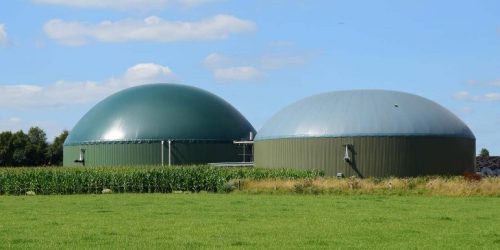The challenges in the energy sector of Pakistan have always been of great significance. The energy demand in Pakistan is increasing by the rate of 11 to 13 percent each year. The requirement of energy for Pakistan was once 57.6 million tons of oil equivalents but it is estimated that by the end of 2025 it will reach more than 179 million tons of oil equivalent. In the year of 2012, Pakistan faced the worst energy crisis, where the electricity falls to 8500 megawatts, due to this shortage of energy the whole country faced issues of load shedding up to 20 hours per day. The occurrence of unexpected shortfalls affected the economy of Pakistan because several industries were shut down during this era thus creating a void in the upcoming energy production.
The energy requirement of Pakistan is fulfilled by the crude oil import which is worth 1400 million US dollars; this import impacted the economy of Pakistan in a pretty negative image. In recent times Pakistan has imported the fossil fuels up to 20 percent, whereas the conventional energy resources account for a total of 40 percent of Pakistan’s energy import.
The demand for energy in Pakistan is on the verge of increasing. This energy demand will become triple-fold or more by the year 2050. But the issue resides when there is a low production of energy which cannot meet the needs or demands of the energy sector or industrial sector. Currently, Pakistan depends on conventional energy resources to meet the need of recent times. The energy crisis can only be handled when the public or private energy sectors will explore the greener technology or alternative green resources for energy production. Pakistan exhibits great potential for renewable energy whether, it could be wind, solar, biogas, or geothermal energy. In Pakistan, the domain of biogas energy is not much explored, however solar and wind power energy is being used in some parts of Pakistan.
In the economic survey of Pakistan done from 2012 to 2013, the livestock which is responsible for the production of biogas contributes up to 56 percent which is equivalent to 12 percent in the GDP of Pakistan. About 1140 million tons of dung is produced by a total of 72 million livestock animals. This manure is stored outside and has no proper storage facilities, which leads to unpleasant air and uninvited diseases.
The Economic Potential of Biogas Energy:
The report by PCRET clearly states that the biogas plant is capable of saving 64 kilograms of LPG; kerosene oil saved can range up to 931 and approximately 800 kilograms of wood per month. The calculations are solely done by the PCRET team.
The conventional sources of energy have the estimated cost ranges between rupees 3550 to 1000 rupees. The conventional fuels are of dung cakes, LPG, agricultural fertilizers, and wood.
The chemical or agricultural fertilizers on the other hand are swapped with the use of bio-slurry which is only 600 rupees.
Biogas of 10 meters cube capacity has the range to save up almost 92,062 rupees per year, without the need of buying alternative sources of fuel. The calorific value of the biogas goes up to 6kWh per meter cubes which is equals to the 20 megajoules, which can be used as an alternative for the conventional sources of energy, the deforestation rate can be decreased too by the 1 meters cube of the biogas. The people living in rural areas could save up their time that is utilized in wood collection or cooking can save up to three hours of their day by the use of biogas. The country is widely dependent on the energy extracted from traditional energy sources. A large amount of money could be saved just by initiating the biogas installation projects. Biogas has not only the potential to uplift the country economically but it can also be deemed very beneficial when it comes to the environmental impacts. Lower environmental impacts can save a lot of money that is utilized for sustainable environmental projects.
The potential of Biogas: From the Perspective of Environment
The developing regions around the world are more inclined towards generating energy from traditional sources; coal, wood, fuels, etc. These sources are a massive contributor to the global carbon emissions, the carbon footprints increase because of the continuous usage of the carbon eliminating sources. Biogas could be a great alternative to swap these energy sources. In a country like Pakistan with limited economic resources, it is important to adapt to the changing trends of energy usage around the world. Being an agro-economic country, this region is blessed with the possibility of using livestock ranges for the production of Biogas. It could be a pivotal point for Pakistan’s economy to regain its position in the world as a rising economy.
The pollution index of Pakistan is increasing with each passing day; majorly the whole nation is aware of the cause of pollution but to mitigate this pollution, we are not so much aware of the solutions. The government of Pakistan and the private sector must collaborate in the outreach programs of installing the biogas plants, it is to be said that in near future most of the countries would switch to renewable energy sources and the usage of biogas could be on the top of their list. The potential of Pakistan in the biogas energy is tremendous and if utilized properly could be a game-changer for Pakistan’s economy and environment.
Pakistan spends millions of dollars in the process of utilizing and obtaining conventional energy sources. Not only does it put an economic strain on the country but it also degrades the environment in the most horrific manner. The energy demand in Pakistan is increasing with each passing day. Industries are growing in number along with the population; thus the more electricity and energy demand. This demand will only increase with coming age, but to mitigate the impacts of traditional energy sources, the use of biogas is the most viable, scalable, and inclusive solution to the energy-related issues, not only of Pakistan but most of the developing countries.






